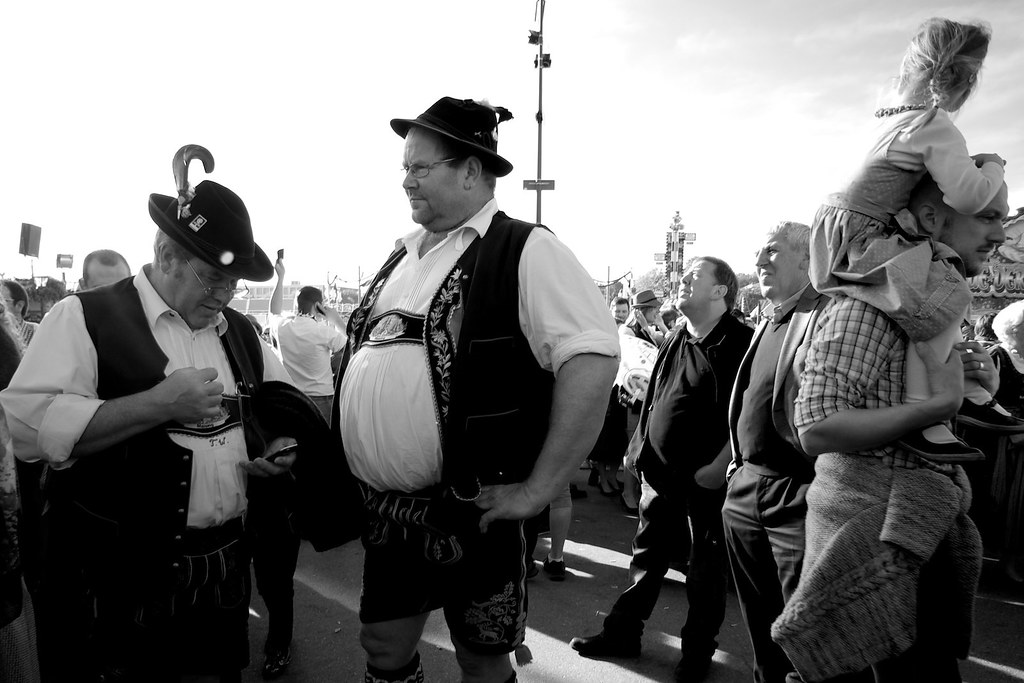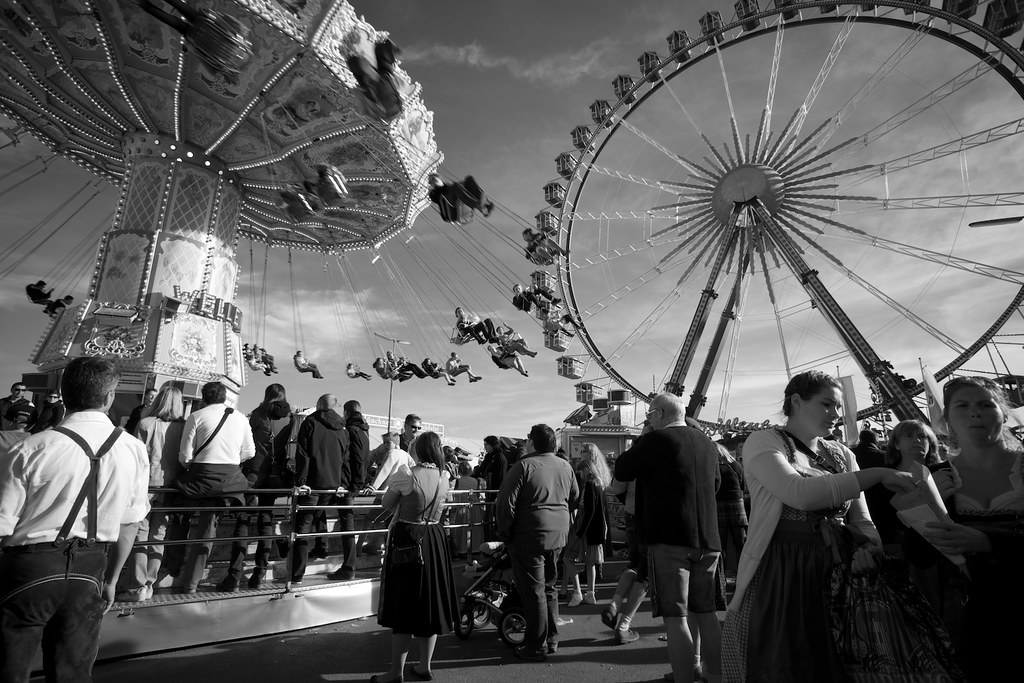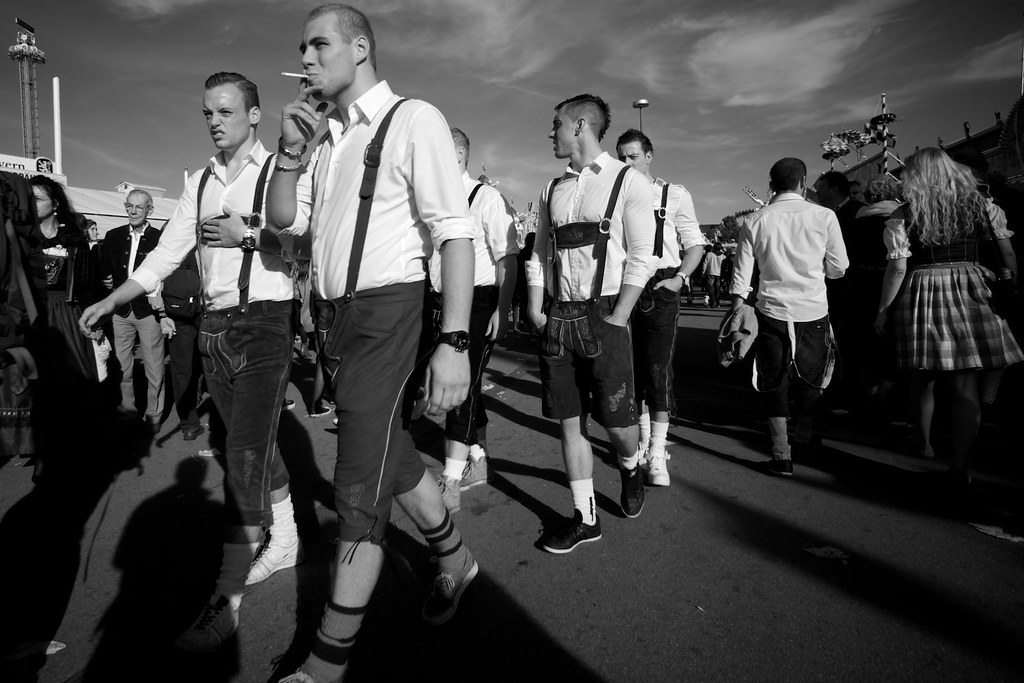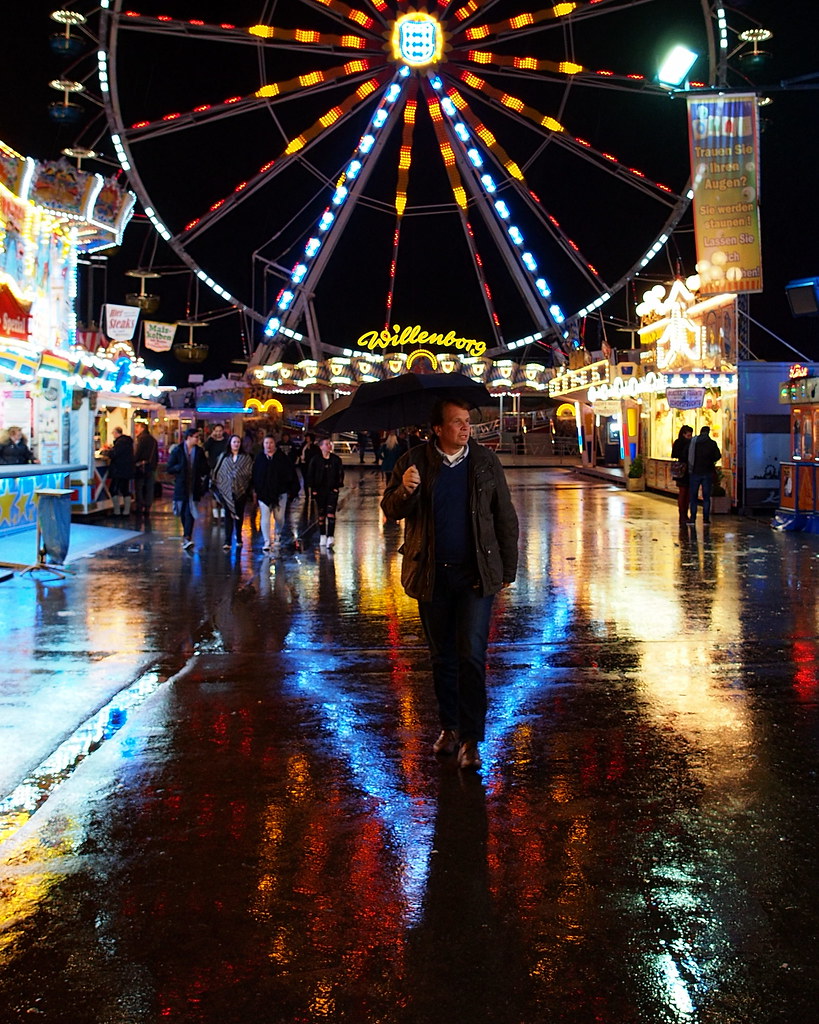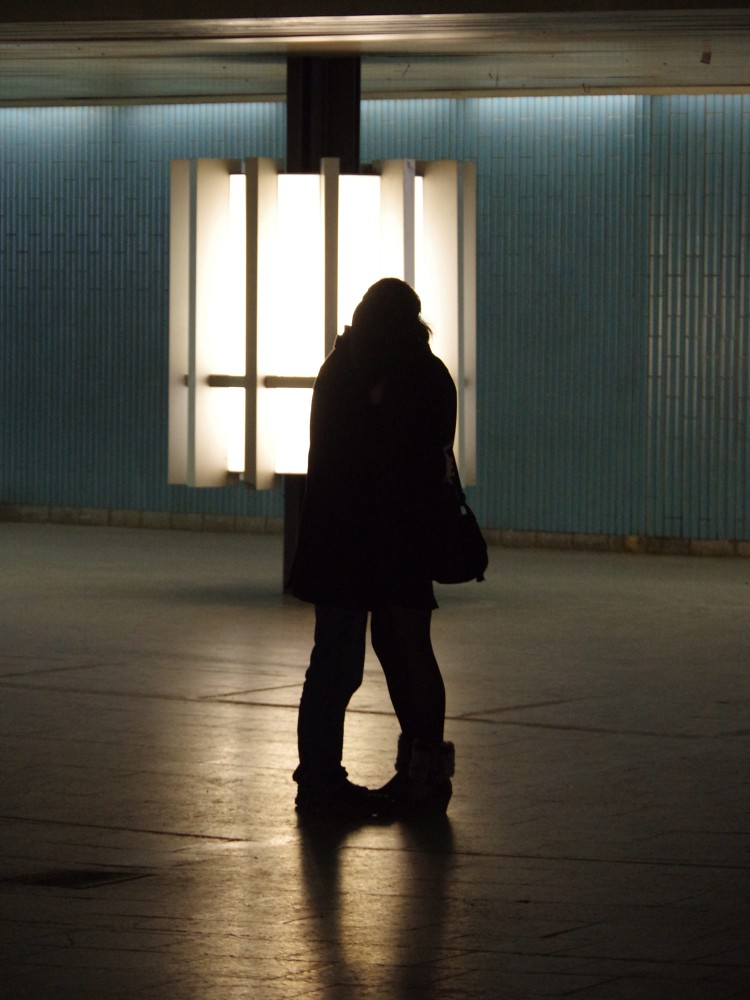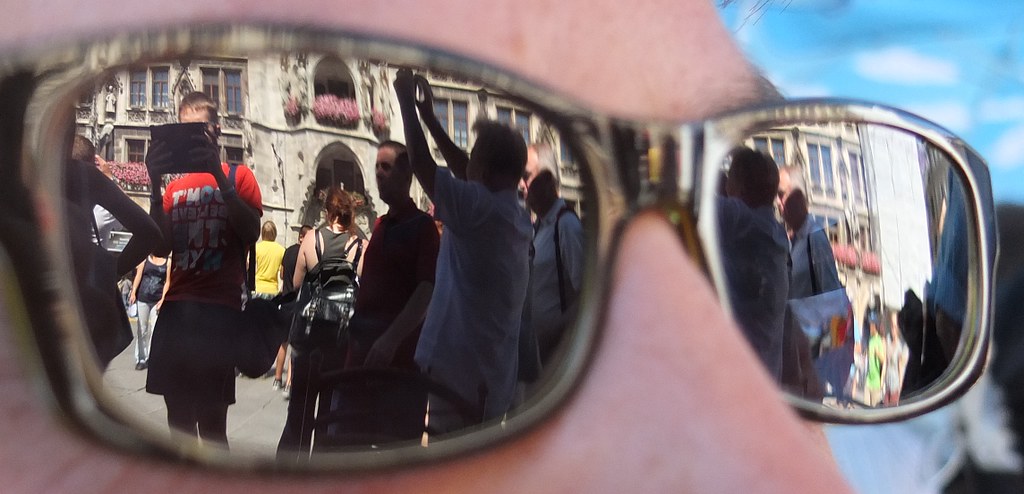-
Please use real names.
Greetings to all who have registered to OPF and those guests taking a look around. Please use real names. Registrations with fictitious names will not be processed. REAL NAMES ONLY will be processed
Firstname Lastname
Register
We are a courteous and supportive community. No need to hide behind an alia. If you have a genuine need for privacy/secrecy then let me know! -
Welcome to the new site. Here's a thread about the update where you can post your feedback, ask questions or spot those nasty bugs!
You are using an out of date browser. It may not display this or other websites correctly.
You should upgrade or use an alternative browser.
You should upgrade or use an alternative browser.
Street Color How do you set up? Ambush, Interrupt or Long Lens?
- Thread starter Asher Kelman
- Start date
Asher Kelman
OPF Owner/Editor-in-Chief
Jerome,
What is happening? This looks like a big happening in a beer garden but the little girl is looking to the right while the men in the center are transfixed by something in the air perhaps, while the musicians or dancers have a break?
Asher
What is happening? This looks like a big happening in a beer garden but the little girl is looking to the right while the men in the center are transfixed by something in the air perhaps, while the musicians or dancers have a break?
Asher
Jerome Marot
Well-known member
Asher Kelman
OPF Owner/Editor-in-Chief
Wow! A real treasure!
Now this is temporary, in one of the open spaces in or around Munich?
Or is it permanently located?
Asher
Now this is temporary, in one of the open spaces in or around Munich?
Or is it permanently located?
Asher
Asher Kelman
OPF Owner/Editor-in-Chief
....and is it also available in color?
How fortunate that the old crafts are maintained and can withstand modern usage!
Asher
How fortunate that the old crafts are maintained and can withstand modern usage!
Asher
Jerome Marot
Well-known member
....and is it also available in color?
As this was a digitial capture, I should probably still have the color file somewhere. But there was a reason why I converted the picture to B&W, artist's vision, etc...
Now this is temporary, in one of the open spaces in or around Munich?
As Munich is world famous for that particular event, I am pretty sure you can find out by yourself.
BTW, and considering the discussion in the thread: no travel, no people from third world countries or too poor to afford a lawsuit and I did not hide my camera.
Asher Kelman
OPF Owner/Editor-in-Chief
My imagination is that this is in a huge beer garden I was in to celebrate the world football cup.
The folk there were open, welcoming and beyond fabulous. Many painted faces with team or national colors!
As to color, it’s only that I have seen such colorful painted fairground pieces before and feel they might be replaced with LED laden polyurea foam copies!
I enjoy the B&W, for esthetics. No need to change that as it’s so successful.
Just thinking about history and a record!
Asher
The folk there were open, welcoming and beyond fabulous. Many painted faces with team or national colors!
As to color, it’s only that I have seen such colorful painted fairground pieces before and feel they might be replaced with LED laden polyurea foam copies!
I enjoy the B&W, for esthetics. No need to change that as it’s so successful.
Just thinking about history and a record!
Asher
fahim mohammed
Well-known member
James Lemon
Well-known member
"Shoot fast and scram" HCB
Tom Dinning
pro member
The first thing a 'street photographer' must do is to walk into the street. Taking a camera with them is mandatory.
Most of you know the history behind this phenomenon and the people responsible for its popularity and evolution.
Evolution is the key word here. Sure, we copy and emulate but how many of us venture into new expression when we enter the streets?
As Herbie Hancock says: " copying me is going to take you further away from you expressing yourself.
The difference between Adget, Levett and Parr is a world and an era or two apart but they were labelled Street Photographers of their time. In spite of each taking their own path to expression, they have one thing in common; the found the streets where they lived places of endless fascination and uniqueness and they chose to record that with photography.
Many of these photographers didn't label themselves. They were labelled by others, often retrospectively. The term was devised to describe a genre. It wasn't an external definition for which those who pursued the genre must adhere. It was a loosely bound, commonly used term to separate style and subject matter so that critics could discuss their work and separate the artisans from the traditional genres of portrait, landscape, etc.
Here at OPF there are many fine examples of the genre. They vary in their approach in line with the creativity of the individual.
Personally, I can only admire the efforts. I would not enter into the minefield of challenging technique of subject matter. Nor would I think of copying a method or approach. I have my favourites here and elsewhere.
My approach is definitely for the faint hearted or ethical among us.
Small camera (because I can no longer carry larger cameras and lenses), often an ipod, one lens, often wide angle to normal focal length. It must fit into my manbag.
Be an observer. Do not interfere with the scene. Do not speak to people, do not eyeball them.
Stay within the legal limits. Apologise for nothing, take everything with grace and persistence.
Walk away from discussions, arguments, dogs and children who point and call their mother.
The street is the canvas of living onto which others paint. I am less interested in the individual than in the happenstance.
Of all the places I have photographed, the street is where I am most comfortable.
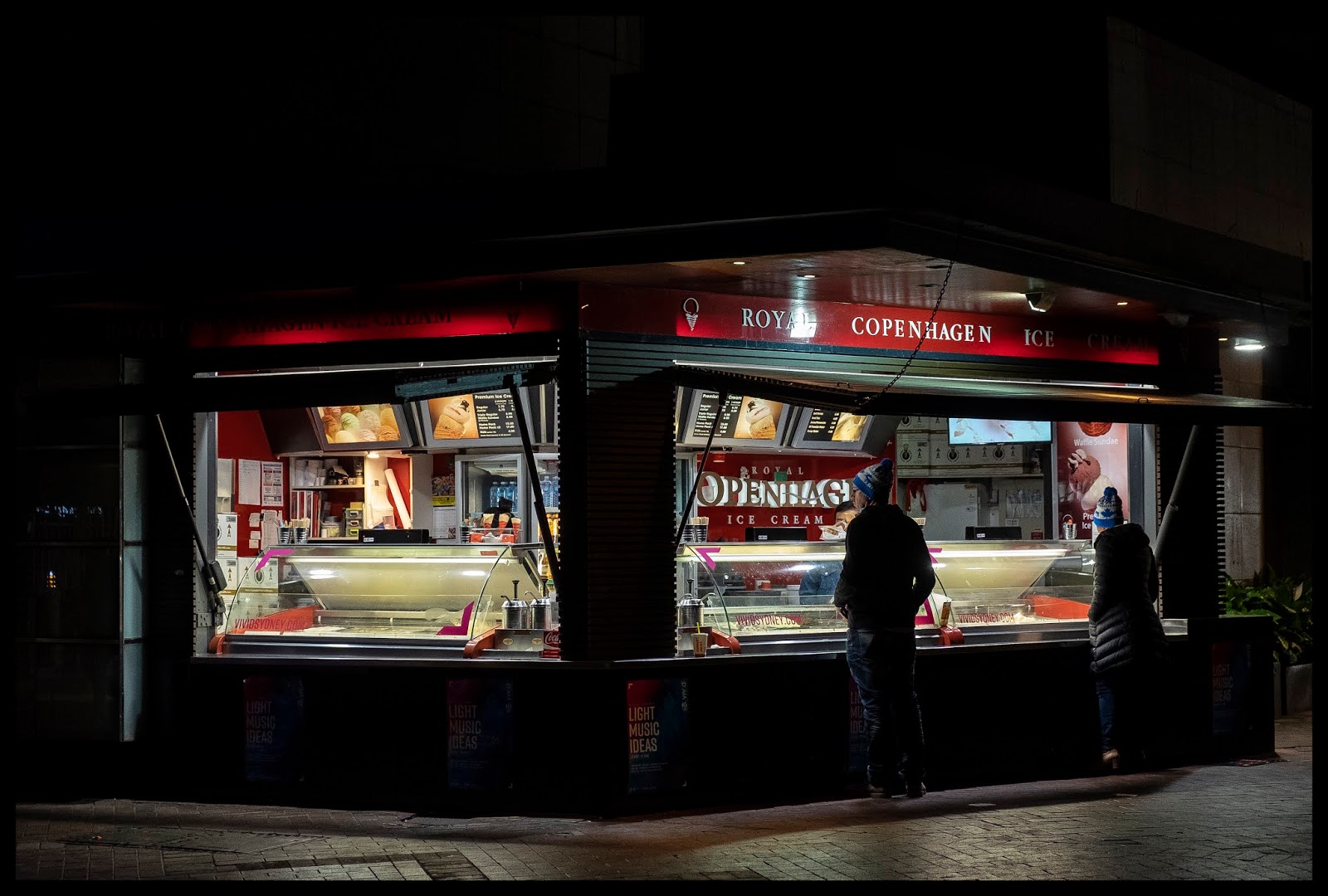
Most of you know the history behind this phenomenon and the people responsible for its popularity and evolution.
Evolution is the key word here. Sure, we copy and emulate but how many of us venture into new expression when we enter the streets?
As Herbie Hancock says: " copying me is going to take you further away from you expressing yourself.
The difference between Adget, Levett and Parr is a world and an era or two apart but they were labelled Street Photographers of their time. In spite of each taking their own path to expression, they have one thing in common; the found the streets where they lived places of endless fascination and uniqueness and they chose to record that with photography.
Many of these photographers didn't label themselves. They were labelled by others, often retrospectively. The term was devised to describe a genre. It wasn't an external definition for which those who pursued the genre must adhere. It was a loosely bound, commonly used term to separate style and subject matter so that critics could discuss their work and separate the artisans from the traditional genres of portrait, landscape, etc.
Here at OPF there are many fine examples of the genre. They vary in their approach in line with the creativity of the individual.
Personally, I can only admire the efforts. I would not enter into the minefield of challenging technique of subject matter. Nor would I think of copying a method or approach. I have my favourites here and elsewhere.
My approach is definitely for the faint hearted or ethical among us.
Small camera (because I can no longer carry larger cameras and lenses), often an ipod, one lens, often wide angle to normal focal length. It must fit into my manbag.
Be an observer. Do not interfere with the scene. Do not speak to people, do not eyeball them.
Stay within the legal limits. Apologise for nothing, take everything with grace and persistence.
Walk away from discussions, arguments, dogs and children who point and call their mother.
The street is the canvas of living onto which others paint. I am less interested in the individual than in the happenstance.
Of all the places I have photographed, the street is where I am most comfortable.

Asher Kelman
OPF Owner/Editor-in-Chief
It’s fascinating to watch, un-perturbed such strange human behavior.The first thing a 'street photographer' must do is to walk into the street. Taking a camera with them is mandatory.
Most of you know the history behind this phenomenon and the people responsible for its popularity and evolution.
Evolution is the key word here. Sure, we copy and emulate but how many of us venture into new expression when we enter the streets?
As Herbie Hancock says: " copying me is going to take you further away from you expressing yourself.
The difference between Adget, Levett and Parr is a world and an era or two apart but they were labelled Street Photographers of their time. In spite of each taking their own path to expression, they have one thing in common; the found the streets where they lived places of endless fascination and uniqueness and they chose to record that with photography.
Many of these photographers didn't label themselves. They were labelled by others, often retrospectively. The term was devised to describe a genre. It wasn't an external definition for which those who pursued the genre must adhere. It was a loosely bound, commonly used term to separate style and subject matter so that critics could discuss their work and separate the artisans from the traditional genres of portrait, landscape, etc.
Here at OPF there are many fine examples of the genre. They vary in their approach in line with the creativity of the individual.
Personally, I can only admire the efforts. I would not enter into the minefield of challenging technique of subject matter. Nor would I think of copying a method or approach. I have my favourites here and elsewhere.
My approach is definitely for the faint hearted or ethical among us.
Small camera (because I can no longer carry larger cameras and lenses), often an ipod, one lens, often wide angle to normal focal length. It must fit into my manbag.
Be an observer. Do not interfere with the scene. Do not speak to people, do not eyeball them.
Stay within the legal limits. Apologise for nothing, take everything with grace and persistence.
Walk away from discussions, arguments, dogs and children who point and call their mother.
The street is the canvas of living onto which others paint. I am less interested in the individual than in the happenstance.
Of all the places I have photographed, the street is where I am most comfortable.

What do they expect to learn from staring? Or is the store closed already and they are waiting for a bus?
Asher
Michael Nagel
Well-known member
Michael Nagel
Well-known member
Asher Kelman
OPF Owner/Editor-in-Chief
Michael,
I think Arthur “Weegie” Fellig said the secret was “F8 & be there!”
I agree, what what does the “there” refer to?
In the original succinct aphorism we just assume it means turn up with a camera and film!
But in both your pictures, the “there” is much more specific. You have positioned yourself at the distance and height from the ground and therefore angle to line the elements up and achieve the effects you have delivered each time.

Michael Nagel: Willenborg

Michael Nagel: Silhouetten
Asher
I think Arthur “Weegie” Fellig said the secret was “F8 & be there!”
I agree, what what does the “there” refer to?
In the original succinct aphorism we just assume it means turn up with a camera and film!
But in both your pictures, the “there” is much more specific. You have positioned yourself at the distance and height from the ground and therefore angle to line the elements up and achieve the effects you have delivered each time.
Michael Nagel: Willenborg
Michael Nagel: Silhouetten
Michael Nagel
Well-known member
Michael Nagel
Well-known member
Jerome Marot
Well-known member
Amusingly, I took a picture on the street today. The caption would translate to "wood fire pizza". No people.

(Incidentally, I am directly posting that from a tablet running Lineage OS, google-free. It was just as inconvenient as from the iPad. I am testing, OK?)
(Incidentally, I am directly posting that from a tablet running Lineage OS, google-free. It was just as inconvenient as from the iPad. I am testing, OK?)
Doug Kerr
Well-known member
Hi, Jerome,
Great shot. Thanks.
Incidentally, in the US a very common term for that situation is a closer-to-literal translation of the German, "Wood oven pizza."
Best regards,
Doug
Amusingly, I took a picture on the street today. The caption would translate to "wood fire pizza". No people.
Great shot. Thanks.
Incidentally, in the US a very common term for that situation is a closer-to-literal translation of the German, "Wood oven pizza."
Best regards,
Doug
Asher Kelman
OPF Owner/Editor-in-Chief
Unless the wood gives of some tasty smoke, how does wood help?
Asher
Asher
Asher Kelman
OPF Owner/Editor-in-Chief
Michael,
Is this your surreptitious way?
I am always taken by reflections as they get you two places at once!
Asher
Doug Kerr
Well-known member
Hi, Asher,
I think that is part of it.
My understanding is that with wood firing it is practical to operate at a higher temperature than with gas or electric firing (no, I don't know why) and that is considered desirable as to the cooking of the crust vs. the topping.
Best regards,
Doug
Unless the wood gives of some tasty smoke . . .
I think that is part of it.
. . . how does wood help?
My understanding is that with wood firing it is practical to operate at a higher temperature than with gas or electric firing (no, I don't know why) and that is considered desirable as to the cooking of the crust vs. the topping.
Best regards,
Doug
Jerome Marot
Well-known member
My understanding is that with wood firing it is practical to operate at a higher temperature than with gas or electric firing (no, I don't know why)
There is noticeably more energy in wood than in gas because the C-C bound has more energy than the C-H bound (that is also the reason why there is more energy in diesel fuel than in gasoline).
At a beekeeper club, we had a large heatable tub of water, originally heated with wood. As it was inconvenient to recharge with wood every 20" or so, someone replaced the fire with a gas heater. An 8 kW model was not enough. A large 15 kW model barely does the job, before the gas bottle freezes.
The smallest wood stove would heat a room with about 8 kW. More standard "family" models which were popular in the 60s are nominally 15 kW.
Doug Kerr
Well-known member
Hi, Jerome,
Best regards,
Doug
Aha! I seem to have forgotten that. Thanks.There is noticeably more energy in wood than in gas because the C-C bound has more energy than the C-H bound (that is also the reason why there is more energy in diesel fuel than in gasoline).
All very interesting. Thanks.At a beekeeper club, we had a large heatable tub of water, originally heated with wood. As it was inconvenient to recharge with wood every 20" or so, someone replaced the fire with a gas heater. An 8 kW model was not enough. A large 15 kW model barely does the job, before the gas bottle freezes.
The smallest wood stove would heat a room with about 8 kW. More standard "family" models which were popular in the 60s are nominally 15 kW.
Best regards,
Doug

